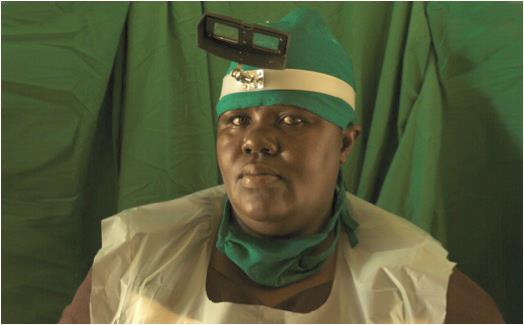Globally, 1.9 million people are blind or visually impaired because of trachoma, and a further 182 million are at risk of going blind because of the disease. It is four times more likely to affect women than men in developing countries.
This is because the disease is caused by a bacterial infection that is transmitted from person to person, usually by dirty hands or faeces. As women are often caregivers to their family and carry out tasks such as laundry, child rearing and taking care of sick family members, they are more likely to be exposed to infection. But many women are fighting back, working towards eliminating trachoma within their communities.
The Trachoma Initiative
One such woman is Esther Anyango, an ophthalmic clinical officer (OCO) from Iganga, Uganda, who performs surgery on people who have repeated and advanced cases of trachoma. Uganda is one of 39 countries in the world where trachoma is so severe it is categorised as a major threat to public health. Esther is part of the Trachoma Initiative, a programme that is working to eliminate blinding trachoma in 12 Commonwealth countries by 2019.
Since 2014, the Trachoma Initiative has worked in 33 Ugandan districts, provided sight-saving surgery to nearly 27,000 people, trained 65 surgeons, and mobilised nearly 5,000 case finders to identify those in need of treatment.
Before the Initiative began, 10 million Ugandans were at risk of trachoma. Thanks to the efforts of a community of partners and professionals like Anyango, the Ugandan Ministry of Health now estimates that fewer than 300,000 people are at risk of catching the disease. As a result, the country is on track to reach the surveillance period of trachoma elimination by 2019.
Training
After training to become a nurse in 1999 and working in an eye department, Esther explains why she decided to do further training. ‘I would see people who had lost their sight and I thought I should get fully trained. These are our people – when I see them blind I feel bad, especially when they can be cured.

Esther Anyango
‘One day, an OCO came to our health centre. He was the only OCO in the whole of Busoga and used to travel between all the districts. I asked him if there was a chance of becoming an OCO and he put my name forward to be trained by SightSavers. I got qualified, and it grew from there.
‘In the hospital where I work, there is an eye clinic but no eye unit. It’s a big hospital and we get patients from all four districts, a population of several million, so it’s very busy, but its performance has been the best in the whole of Uganda.
‘I’ve been doing surgery since I qualified in 2004, and last year I went with 10 other OCOs for refresher training with the Trust. We used to see a lot of people with trachoma, but now because more surgeons have been trained, we see the numbers reducing. We counsel people who are scared of having an operation and encourage people who have been treated for trachoma through surgery to spread the good news.
‘We also hold outreach camps for trachoma trichiasis [repeated infections of trachoma, requiring surgery], which are very important – they are saving many people’s sight.
‘Trachoma used to be worse in children. Their eyes had discharge and were full of flies. But we give training about face washing and hygiene, which has helped people to stop the disease spreading.
‘I feel proud when I have helped and improved people’s hygiene. I feel good that trachoma can be eliminated.’
The Trachoma Initiative is funded by the Queen Elizabeth Diamond Jubilee Trust. In Uganda, it works in partnership with the Ugandan Ministry of Health, SightSavers, the Carter Centre, RTI, Water Missions Uganda, World Vision and the World Health Organisation and community organisations.
For more information visit www.sightsavers.org.
